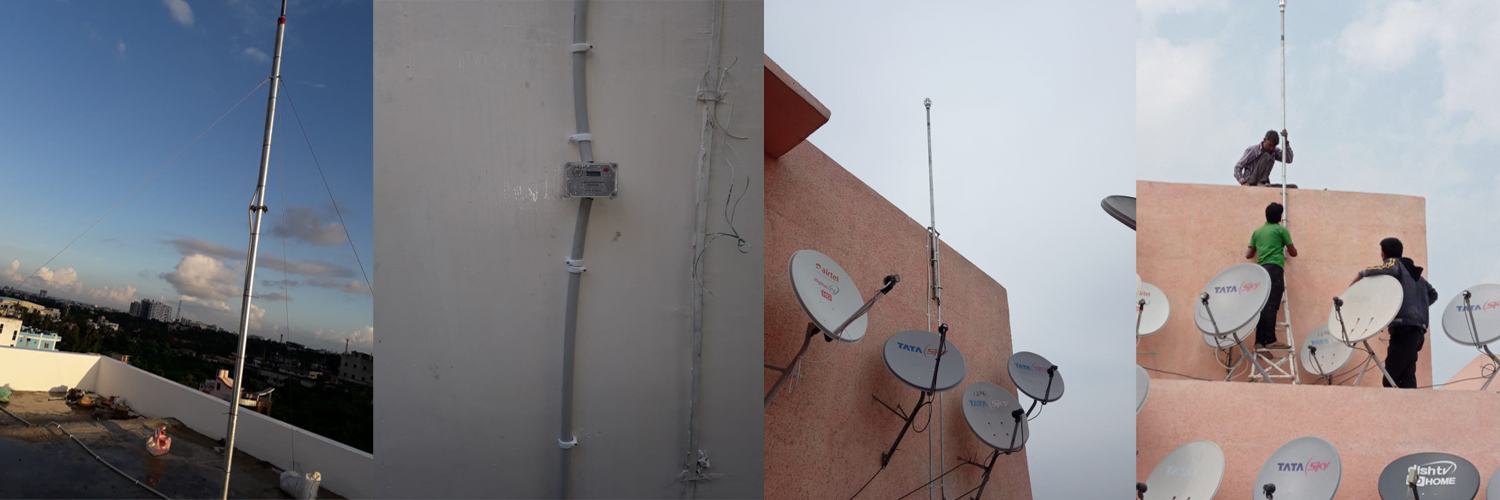
What is lightning?
Clouds may look fluffy and innocent, but they are actually active places. At their most exciting, they can create the wondrous effect of lightning.
The occurrence of natural electrical discharge of very short duration and high voltage between a cloud and the ground or within a cloud, accompanied by a bright flash and typically also thunder.
How is lightning formed?
Water and ice move around inside the cloud; forced up by warm air currents, down by gravity, and compressed in the cloud. Just as rubbing a balloon can create static electricity, the particles in the cloud become charged. It’s not clear how it happens, but charges separate in the cloud. Positive charges move up, and negatives move down.
Once a significant charge separation has built up, the positive and negative charges seek to reach each other a neutralize. ‘Streamers’ come up from the ground to form a pathway. Once a pathway is completed a spark forms, neutralizing the charge.
As the negative charge races down, the air surrounding it heats up.The spark is very hot at almost 20,000 degrees Celsius, and it rapidly heats the air to create a shock wave.
Considering light travels very fast – about 300 million metres per second, and that sound only travels at 300 metres per second; light is a million times faster than the sound produced. To find out how far away the storm is, you can count how long you hear the sound after the lightning. For every 4 seconds between the flash and the rumble, the thunderstorm is 1 mile away.
Lightning facts
• At any time there are over 2,000 thunderstorms occurring worldwide, each producing over 100 lightning strikes a second.
• That’s over 8 million lightning bolts every day.
• Each lightning flash is about 3 miles long but only about a centimetre wide
• A lightning strike discharges about 1-10 billion joules of energy and produces a current of 30,000 – 50,000 amps.
• A single lightning bolt unleashes as much energy as blowing up a ton of TNT.
• A strike is actually made up of between three and twelve individual lightning ‘strokes’, each lasting only a few thousandths of a second.
SOLUTIONS:- Early Streamer Emission Lighting Arrestor with Maintenance frees Earthing.

Why Earthing?
Earthing is the process of creating an alternative path for the flow of fault/excessive currents safely into the ground in the presence of minimal resistance or impedance.
The primary purpose of earthing is to reduce the risk of serious electric shock from current leaking into uninsulated metal parts of an appliance, power tool, or other electrical devices. In a properly earthed system, such leaking/fault current is carried away harmlessly while tripping the fuse. Earthing also provides protection from large electrical disturbances like lightning strikes and power surges. It also aids in the dissipation of hazardous static electrical charges.
Although most electrical systems have fuses or circuit breakers for protection against a fault current, the human body may be fatally electrocuted by a current of less than one ampere which is well below the point at which a fuse or breaker will operate. Earthing helps minimize such hazards from occurring.
Safe Earthing Electrode
It is a metal electrode that goes into the ground near the building. It helps in the efficient discharge of all the fault currents/ surge currents present in the electrical system. It also helps in dissipating the high voltages which are passed on through the lightning arrestors atop buildings.
Back Fill Compounds
These are earth enhancement compounds which have different properties depending on soil and other atmospheric conditions. Essentially, an ideal BFC has high electrical conductivity, moisture capture, and retention abilities and anti-corrosive properties. It works in tandem with the Safe Earthing Electrode. Together both form the efficient earthing system.

Chemical Earthing Electrode Vs Traditional Earthing
Chemical Earthing Electrode Method |
Traditional Earthing Method |
| Highly galvanized solid conductor inside a highly galvanized Chemical Earthing Electrode with conductive material in the space between. | One G.I /C.I. pipe of particular diameter. |
| CEE Earth is surrounded by a non-corrosive / nonsoluble conductive material & is not in direct contact with the soil. | The earth electrode is in direct contact with the soil. |
| Earth resistance values are constant over a period of time due to the least corrosion. | Earth resistance is more & fluctuating over the period of time. |
| Proper care is taken to wear fighting by a high degree of corrosion fighting coating more than 250 microns. | 15 micron galvanized medium grade G.I. pipe is generally used. |
| CEE conductive material is not soluble in water & it becomes part of the soil around the electrode. | Backfill compound (salt) used will be washed away in rainy seasons and will be resulted in high earth value. |
| The system is Maintenance free & long-lasting and easy to install. | Starts getting damaged right from day one of installation & need frequent maintenance. |
As per standard Electrode, size is 3 mtr. In length, in diameter electrode is 50 mm. Ohmic value totally depends upon the type of soil. Our product can be used in the form of a GRID using 3 or more in nos. for highly sensitive projects low OHMIC value is required.













